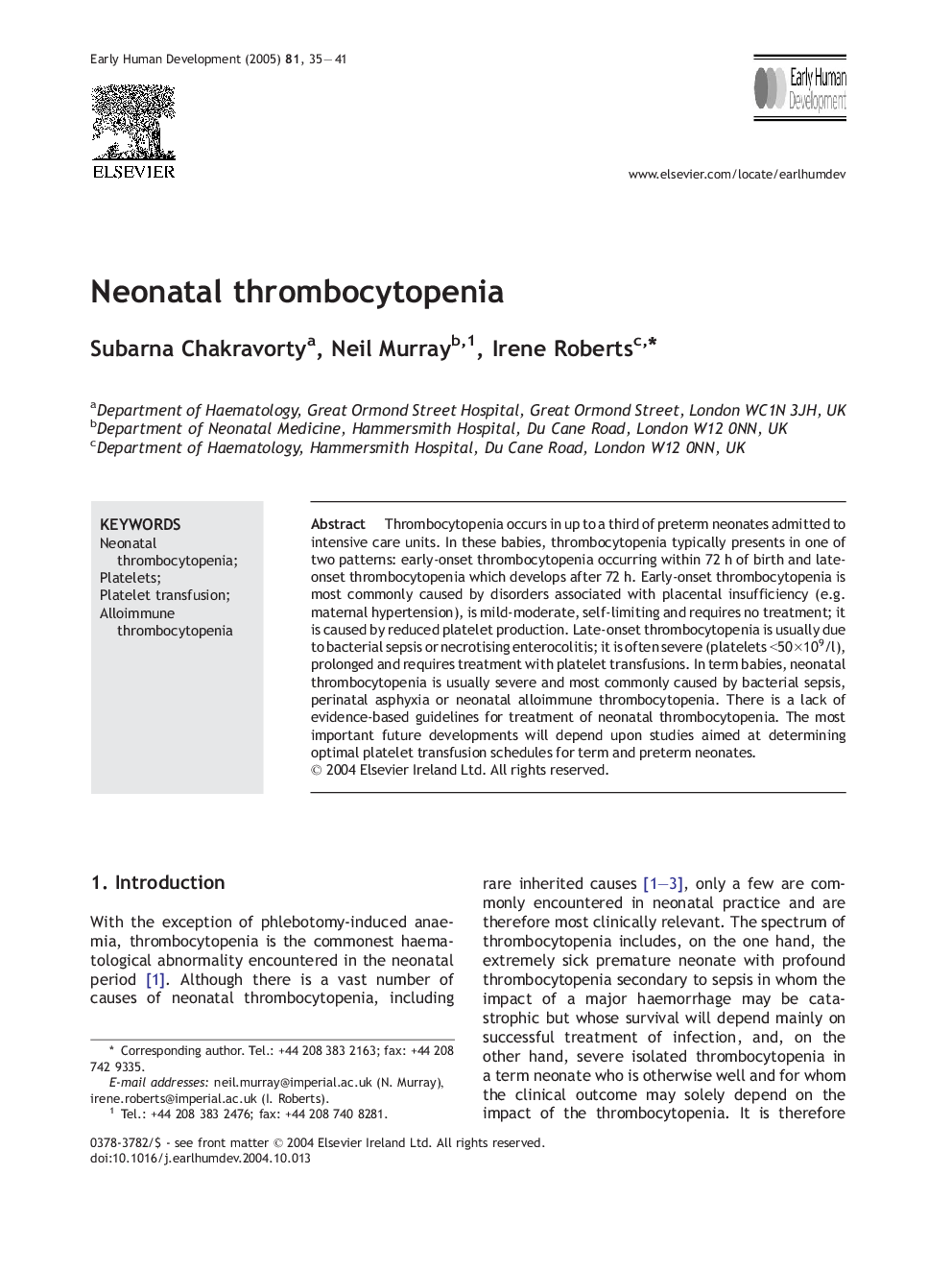| Article ID | Journal | Published Year | Pages | File Type |
|---|---|---|---|---|
| 9318744 | Early Human Development | 2005 | 7 Pages |
Abstract
Thrombocytopenia occurs in up to a third of preterm neonates admitted to intensive care units. In these babies, thrombocytopenia typically presents in one of two patterns: early-onset thrombocytopenia occurring within 72 h of birth and late-onset thrombocytopenia which develops after 72 h. Early-onset thrombocytopenia is most commonly caused by disorders associated with placental insufficiency (e.g. maternal hypertension), is mild-moderate, self-limiting and requires no treatment; it is caused by reduced platelet production. Late-onset thrombocytopenia is usually due to bacterial sepsis or necrotising enterocolitis; it is often severe (platelets <50Ã109/l), prolonged and requires treatment with platelet transfusions. In term babies, neonatal thrombocytopenia is usually severe and most commonly caused by bacterial sepsis, perinatal asphyxia or neonatal alloimmune thrombocytopenia. There is a lack of evidence-based guidelines for treatment of neonatal thrombocytopenia. The most important future developments will depend upon studies aimed at determining optimal platelet transfusion schedules for term and preterm neonates.
Related Topics
Health Sciences
Medicine and Dentistry
Obstetrics, Gynecology and Women's Health
Authors
Subarna Chakravorty, Neil Murray, Irene Roberts,
